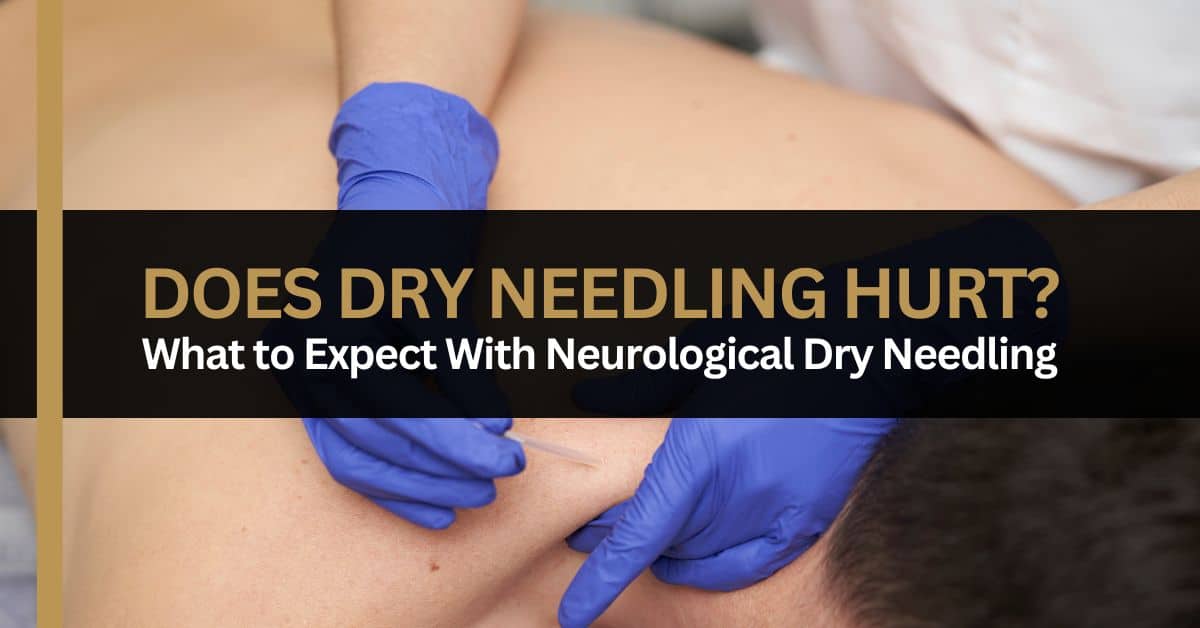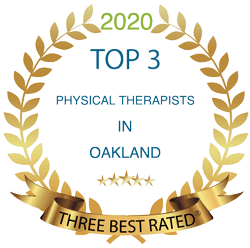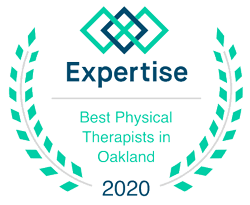If you’re considering therapies to reduce pain, you might be wondering—does dry needling hurt? The answer depends on your nervous system, sensitivity levels, and the area being treated.
You might feel a quick pinch as the needle enters the skin, but the real sensation comes when it reaches the deeper structures influencing nerve function. Some people describe it as a dull ache, slight pressure, or even a tingling sensation.
These responses mean the nervous system is reacting, which is part of the therapeutic process.
If you’re nervous, your muscles and nerves may be more reactive. Staying relaxed and breathing deeply can help reduce discomfort. Your provider can also adjust the technique to make the experience as comfortable as possible.
You may have many questions about neurological dry-needling, so keep reading for answers!
How is dry needling different from acupuncture?
Dry needling and acupuncture both use thin filiform needles, but their goals and methods are completely different.
Acupuncture comes from traditional Chinese medicine and focuses on restoring energy flow (Qi) through meridian points in the body.
Dry needling, on the other hand, is a modern therapeutic technique used by licensed physical therapists to relieve pain, promote healing, and restore muscle function by targeting trigger points in the muscle tissue.

What Happens During a Dry Needling Session?
- A licensed physical therapist inserts thin needles into tight muscle bands or myofascial trigger points.
- The needle elicits a local twitch response, which is a normal response that helps release tension.
- Unlike acupuncture, dry needling is based on Western medical principles, targeting musculoskeletal pain and neuromuscular dysfunction rather than energy flow.
Does dry needling hurt more than acupuncture?
Many patients report very little discomfort during a dry needling session. You might feel a prick sensation during needle insertion, followed by a muscle twitch or cramping sensation when the needle reaches an active trigger point.
This is different from acupuncture, which typically causes a mild tingling or dull aching sensation instead of a twitch response.

If you’re struggling with chronic pain, nerve dysfunction, or musculoskeletal conditions, neurological dry needling could be the solution you need.
Schedule a Discovery Visit or call R3 Physio today at (817) 221-8248 and take the first step toward lasting relief.
How does neurological dry needling differ from trigger point dry needling?
Neurological dry needling targets the muscular and nervous systems to improve pain signals and movement patterns.
Unlike traditional trigger point dry needling, which focuses only on muscle knots, neurological dry needling goes beyond the traditional trigger point model. It enables treatment at multiple levels:
- Locally at the pain site
- Segmentally at its potential source
- Systemically to influence the entire body.
What conditions does dry needling treat?
Dry needling therapy helps with a wide range of musculoskeletal conditions, including:
- Chronic pain conditions like fibromyalgia and myofascial pain syndrome
- Muscle pain and tight muscle bands that restrict movement
- Referred pain from active trigger points in areas like the back, neck, and shoulders
- Plantar fasciitis and other foot-related conditions that affect movement
- Lumbar pain and sciatica caused by deep-seated muscle knots
How Does Neurological Dry Needling Expand the Benefits?
Neurological dry needling goes beyond traditional trigger point techniques to treat nerve-related conditions. It can help with:
- Neuropathy and nerve pain disorders
- Muscle spasticity and movement dysfunctions caused by neurological conditions
- Post-stroke rehabilitation to improve muscle activation and range of motion
Is Dry Needling Safe?
Licensed Physical Therapists and Medical Standards
When performed by a licensed physical therapist trained in dry needling treatment, this therapeutic technique is safe and effective.
The thin needles used in the procedure are sterile, and practitioners follow strict hygiene protocols to prevent infections.
Common Side Effects and Post-Treatment Soreness
Most patients experience very little discomfort after a session. However, mild side effects can include:
- Post-treatment soreness, similar to what you might feel after a deep tissue massage
- A slight discomfort or aching sensation at the needle insertion sites
- A muscle twitch or cramping sensation during the session, which is a normal response
These effects typically resolve within 24 to 48 hours. Drinking plenty of water and doing light stretching can help reduce soreness.
How many sessions will I need?
The number of dry needling sessions needed depends on several factors, including:
- The severity of your musculoskeletal pain or neurological condition
- How your body responds to just one session of dry needling therapy
- Whether the treatment is combined with physical therapy or other rehabilitation methods
What Patients Report
Many patients feel immediate relief after their first dry needling session, especially if the needle elicits a strong local twitch response.
However, chronic conditions often require multiple treatments over several weeks to fully break the pain cycle and restore normal length to affected muscle fibers.
How does neurological dry needling work?
Beyond Trigger Points: Targeting the Nervous System
Unlike traditional dry needling, which focuses on palpable trigger points in muscle tissue, neurological dry needling influences the nervous system. This technique helps
- Promote healing
- Improve pain signals
- Reset dysfunctional movement patterns
What Happens During Treatment?
- Thin needles are inserted into areas that impact the nervous system, not just tight muscle bands.
- The treatment targets nerve pathways to reduce pain, improve coordination, and restore range of motion.
- Some patients experience an aching sensation or tingling instead of a sharp pain or cramping sensation.
Neurological dry needling is especially useful for conditions involving muscle fibers affected by nerve dysfunction rather than just tight muscles.

What conditions benefit from neurological dry needling?
Pain Relief for Nerve-Related Conditions
Neurological dry needling is particularly effective for conditions that affect the nervous system, such as:
- Chronic pain syndromes like complex regional pain syndrome (CRPS)
- Neuropathy caused by diabetes, injury, or nerve compression
- Movement disorders such as Parkinson’s disease or post-stroke rehabilitation
- Referred pain from irritated nerves rather than just muscle knots
Unlike traditional trigger point dry needling, which works on active trigger points, neurological dry needling resets how the nervous system processes pain and movement.
What sensations should I expect during treatment?
Patients report a variety of sensations during a dry needling procedure, including:
- A prick sensation when the needle is inserted
- A local twitch response, which feels like a sudden muscle contraction
- A mild discomfort or aching sensation if the needle reaches a sensitive area
- A cramping sensation or deep pressure, especially in areas with tight muscle bands
These reactions are completely normal and often indicate that the treatment is working. Most patients experience very little discomfort, but individual sensitivity varies.
How does neurological dry needling compare to other treatments like physical therapy or medications?
Neurological dry needling is not a standalone cure but works best as part of a comprehensive treatment plan that may include:
- Physical therapy to improve movement patterns and strengthen weak muscles
- Medication management for pain relief and inflammation control
- Manual therapy like deep tissue massage to break up restrictions in soft tissue
Do Patients Prefer Dry Needling to Medication?
Unlike medications, which only mask symptoms, dry needling therapy directly targets trigger points, improves blood flow, and helps reset nerve signals for longer-lasting results. Some patients notice a difference after just one session, while others need ongoing treatment.
What are the long-term benefits of neurological dry needling?
Neurological dry needling offers significant benefits beyond short-term pain relief. Over time, it can:
- Reduce soreness and stiffness in affected muscles
- Promote healing by increasing blood flow to injured tissues
- Improve range of motion and flexibility, especially in post-stroke patients
- Help manage chronic pain by changing how nerves transmit pain signals
By addressing both muscle pain and neurological dysfunction, this therapy helps you regain movement, reduce discomfort, and break the pain cycle for long-term relief.
Neurological dry needling is all about breaking the pain cycle and restoring function.

Expert Neurological Dry Needling in the Keller Ft. Worth Area
Advanced Care With a Systems-Based Approach
At R3 Physio, our experienced practitioners use neurological dry needling (NDN) to provide a comprehensive approach to pain relief and healing.
Unlike traditional dry needling, which focuses only on trigger points, NDN targets the nervous system, muscle function, and pain pathways to address the root cause of your discomfort.
Why Neurological Dry Needling Works
This advanced technique treats more than just the muscles. It influences neuromuscular function by working on three levels:
- Local Treatment – Directly at the pain site, such as neck pain, shoulder pain, or back pain.
- Segmental Treatment – Addressing the source of pain along the spine and nervous system.
- Systemic Treatment – Creating a full-body response to improve movement, reduce inflammation, and promote healing.
Conditions We Treat
Neurological dry needling at R3 Physio helps a wide range of conditions, including:
- Musculoskeletal pain – Chronic pain, muscle tightness, and movement restrictions.
- Nerve-related pain – Sciatica, carpal tunnel, and neuropathy.
- Headaches and migraines – Tension headaches and migraine-related discomfort.
- Post-injury and post-surgery recovery – Helping muscles regain normal function and strength.
What to Expect During Your Treatment
You may feel a prick sensation when the needle is inserted. If the needle reaches an active trigger point, you might experience a local twitch response or a mild discomfort similar to deep tissue massage. Most patients feel immediate relief or notice gradual improvement over the next few sessions.
Start Your Healing Today
If you’re struggling with chronic pain, nerve dysfunction, or musculoskeletal conditions, neurological dry needling could be the solution you need.
Schedule a Discovery Visit or call R3 Physio today at (817) 221-8248 and take the first step toward lasting relief.







